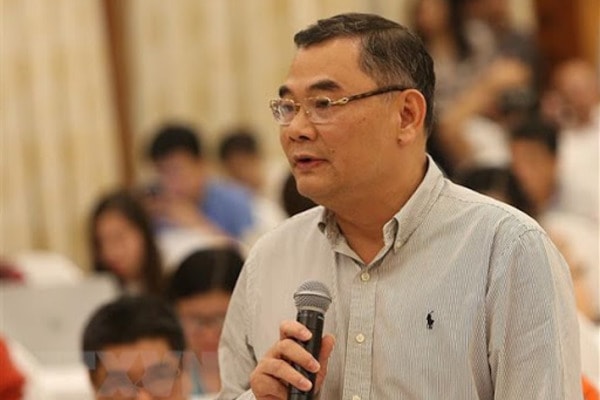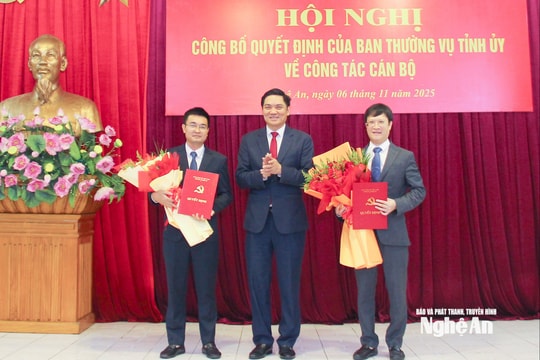Reason for appointing a non-local police director
In the first 6 months of the year, the Ministry of Public Security has transferred, mobilized, and appointed 33 provincial police directors who are not local people, and 29 department directors and equivalent positions.
Major General To An Xo, Chief of Office of the Ministry of Public Security, discussed the implementation of the policy that the provincial police director must not be a local person.
Following the revolution of streamlining the apparatus, eliminating 6 general departments, recently, the Ministry of Public Security has been attracting public attention in the rotation, transfer, and appointment of a series of provincial police directors and many department leaders. Is this the second revolution of the Ministry of Public Security in restructuring the apparatus, sir?
This is one of the follow-up tasks to implement Resolution No. 18 on continuing to innovate and reorganize the apparatus of the political system to be streamlined and operate effectively and efficiently; Resolution No. 19 on continuing to innovate the organizational and management system, improving the quality and efficiency of public service units of the 12th Central Committee and Resolution No. 22 of the Politburo on continuing to innovate and reorganize the apparatus of the Ministry of Public Security to be streamlined and operate effectively and efficiently.
|
| Major General To An Xo revealed the reason for appointing a series of provincial and district police directors who are not local people. |
With high determination, proactiveness and exemplary behavior, the Central Party Committee of the Public Security and the leadership of the Ministry of Public Security have closely coordinated with central ministries, branches and local Party committees to effectively implement the Central Resolutions and Resolution 22 of the Politburo.
The recent rotation, transfer, and appointment also stemmed from the fact that there were cases where people were no longer old enough to be re-elected and had to be replaced according to regulations. This also aimed to implement the regulation that police leaders cannot serve more than 2 terms, and those who were not old enough to be re-elected had to be transferred and replaced to hold key positions.
This is also to ensure the implementation of the Party's policy that the police chief is not a local person.
Many police directors are planned for higher positions.
So up to now, how has the organization of the apparatus been streamlined, the operation effective and efficient in general, and the policy of the police chief not being a local person been implemented?
In addition to cutting down the intermediate levels, eliminating 6 general departments, reducing nearly 60 department-level units, reducing nearly 300 department-level units, and merging 20 fire police departments, the Ministry of Public Security has so far completed the transfer of more than 27,000 regular police officers to 8,592 communes without increasing the staff.
The recent restructuring of the apparatus has helped the police force reduce many agencies, reduce intermediate levels, and especially reduce many leaders.
|
Up to now, the structure of the police force has changed in the direction of reducing the number of agencies at the ministerial level from 21.11% to 19.46%. In contrast, the number of police officers at the ward and commune level has increased from 9.88% to 17.45%. The target number in the coming time at the ministerial level is only 15%, at the provincial level is 85%. In the total payroll of the province, it will be structured as follows: 35% at the provincial level, 35% at the district level and 30% at the ward and commune level.
Regarding the policy that provincial police directors are not local people, in the first 6 months of this year, the Ministry has transferred, mobilized, and appointed 33 provincial police directors, 29 department heads and equivalent positions. These personnel are organized into Party committees to prepare personnel for the occasion of Party congresses at all levels.
It can be said that up to now, nearly 100% of provincial police directors and district police chiefs are not local people.
In addition, the Central Party Committee of the Public Security and the leadership of the Ministry of Public Security are also very interested in training female officers and soldiers to become leaders and commanders. Recently, 2 female generals retired, and currently the Ministry still has 5 female comrades with the rank of general. In the coming time, it is expected that 1-2 more female police officers will be promoted to general.
How do you evaluate the results and significance of appointing a provincial police director who is not a local?
The Ministry has not yet made a specific assessment of this matter, but in general, the comrades who were transferred, mobilized, and appointed all performed very actively and were highly appreciated.
Among the appointed comrades, there are many provincial police directors and district police chiefs who are trusted by the Party Committee, the government and the people to be planned for higher positions. For example, the provincial police director is planned to be deputy secretary of the provincial party committee; chairman, vice chairman of the province or head of the National Assembly delegation.
Through the recent Party Congresses at all levels, 100% of district and commune police chiefs were elected to the Party Committee with a very high number of votes. Especially with nearly 27,000 regular police officers sent to the commune, most of the commune police chiefs were elected to the Party Committee. The same is true at the district level.









